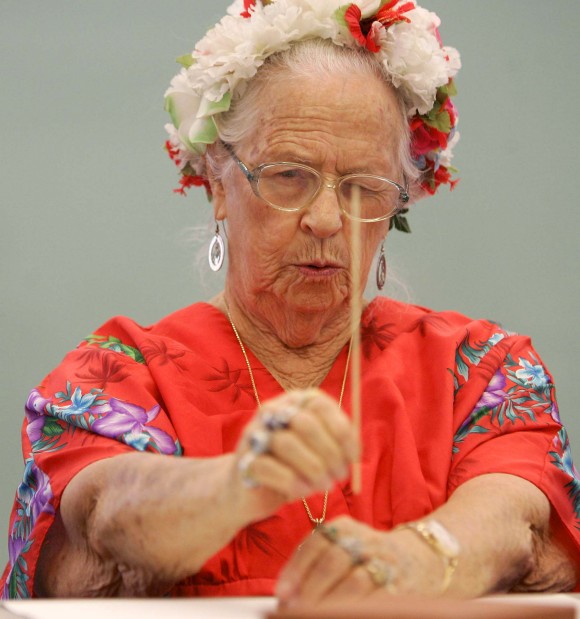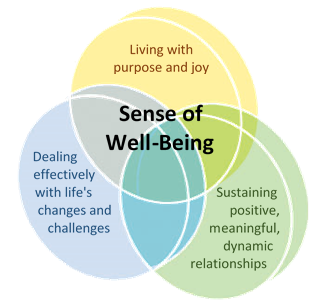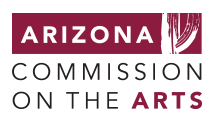When I first ask someone if they’re familiar with Creative Aging, the initial response is often a little tongue-in-cheek, but also perfectly appropriate:
How does one age creatively?
 What I especially like about this question is that even as it acknowledges the inevitability of aging, it suggests an agency we may not always realize we have: we can choose how we age. Further, it suggests that the question of how one ages may be more interesting than “where will I retire?”
What I especially like about this question is that even as it acknowledges the inevitability of aging, it suggests an agency we may not always realize we have: we can choose how we age. Further, it suggests that the question of how one ages may be more interesting than “where will I retire?”
The United States is home to a rapidly growing older adult population. This is particularly true in Arizona, where U.S. Census Bureau data estimates that by the year 2020, more than 1 in 4 people will be over age 60.
According to the National Center for Creative Aging, “This ‘graying’ of America has precipitated dramatic changes in the field of aging. Arguably, one of the most profound changes is a new way of seeing older adults, moving from a ‘deficit’ approach that stresses losses to an ‘asset’ approach that stresses strengths, potential and achievements.”
The arts are uniquely positioned to support this asset approach to aging. Dr. Gene Cohen, author of The Creative Age: Awakening Human Potential in the Second Half of Life, asserts:
There is no denying the problems that accompany aging. But what has been universally denied is the potential. The ultimate expression of potential is creativity.
Creative Aging can be defined as two things. First, and most importantly, Creative Aging is a national movement to advance understanding of the vital relationship between creative expression and quality of life for older adults.
 Our sense of well-being is affected by our ability to live with purpose and joy, to deal effectively with life’s changes and challenges, and to sustain positive, meaningful, dynamic relationships. This is true at any stage of life, but is particularly acute as we age. Decades of research by Dr. Cohen, and others in the field, have demonstrated the clear and direct impact that the arts have on these three elements which lead to improved quality of life through a sense of well-being in older adults.
Our sense of well-being is affected by our ability to live with purpose and joy, to deal effectively with life’s changes and challenges, and to sustain positive, meaningful, dynamic relationships. This is true at any stage of life, but is particularly acute as we age. Decades of research by Dr. Cohen, and others in the field, have demonstrated the clear and direct impact that the arts have on these three elements which lead to improved quality of life through a sense of well-being in older adults.
Secondly, “Creative Aging” is a term, a conceptual umbrella for the different ways in which quality arts programming supports adults across the aging spectrum.
The National Center for Creative Aging defines three primary categories for Creative Aging programs:
Lifelong Learning
As life expectancy increases, more attention is being given to the meaning and purpose of later life. Lifelong arts learning programs aim to meet the developmental needs of older people through creative engagement and self-expression.
Community
Arts programs are essential in a community to help older adults get involved and remain an important part of their communities. Community-based arts programming helps older people as the keepers of culture remain dynamic members of society and provides younger generations with positive role models encouraging a strong sense of meaning and purpose in healthy living in vital communities.
Health and Wellness
Health and wellness can be achieved in many ways, including using creativity to work the mind and body. Research has shown that mental activity stimulated by arts activities can be especially beneficial to people with dementia and Alzheimer’s disease. Arts programming in this area supports older adults with cognitive or physical disabilities, and their caregivers.
On March 13, 2015, the Arizona Commission on the Arts and the Mesa Arts Center will hold Arizona’s first-ever Creative Aging Summit to bring our arts and aging communities together in exploration of these ideas and topics.
Whether experienced or new to the field of Creative Aging, we hope that you’ll join us and be a part of this national movement to create opportunity and potential in later life for all.
To learn more about the Creative Aging Summit: Arts Across the Aging Spectrum, visit www.azarts.gov/creativeaging.



